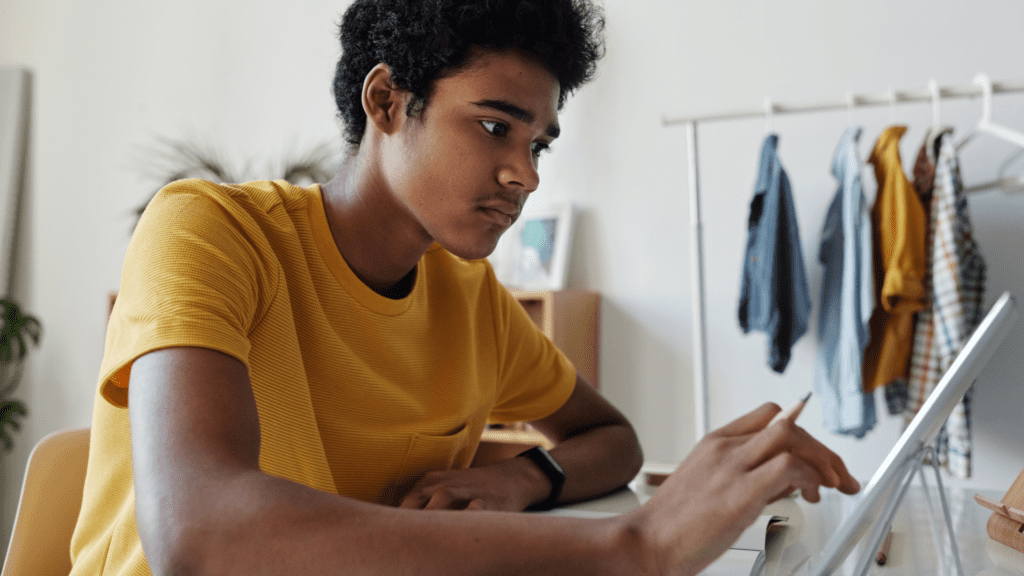
For some, YouTube is a source akin to Google. From simple queries like “how to tie a tie” to more complicated academic problems like understanding stoichiometry in chemistry, YouTube has the answers. In fact, 93% of users have reported using the platform to gather information or knowledge.
YouTube has recognized the opportunity and made educational content a top priority. To make it easier for viewers to learn and for creators to teach, the platform has invested more than $30 million dollars in educational initiatives that support media literacy and creators in the space.
Through these investments, the YouTube Learning hub was born. The space offers curated educational content for viewers looking to learn something new. Independent “EduTubers” and larger educational organizations alike are featured in playlists spanning a variety of topics (many tailored to viewers’ watch history). For example, Daniel Shiffman, founder of coding tutorial channel the Coding Train, has had his content featured on YouTube Learning and began building his own playlists to organize pseudo courses for his dedicated 1.5M subscribers.
Since Learning’s launch in 2018, YouTube has continued improving and upgrading the platform to grow its presence as an educational resource. Most recently, YouTube launched three major updates: Player for Education, Courses, and Quizzes.
As these features are rolled out over the next few months, they’ll offer new avenues for sharing content and additional opportunities for creators to engage with educators and learners. Here’s what to expect:
Better accessibility for educators
Many educational content creators are former or current educators who recognize the value of their content in actual classrooms. A recent report by Oxford Economics found that 96% of U.S. teachers on YouTube incorporate content from the platform into their lessons. Now, instead of external links or poorly embedded videos, educators can use the newly launched Player for Education. The updated video player enables teachers to embed content from validated education creators in education apps and sites without ads, external links, or recommendations. The feature will also offer improved integration with Google Classroom, Google’s free blended learning tool for educators.
Player for Education is currently limited to a select group of EduTubers including EDpuzzle, Purdue University, and Purdue Global. While the new player doesn’t have any immediate impact on creators, it’s an opportunity to take advantage of YouTube’s advanced metadata capabilities for educational content creators. When uploading a video tagged as educational, creators can add specific grade levels, topics, and more to go along with the usual metadata options. The embedded data allows viewers to easily search for content to educate them about a specific topic.
New ways to teach (and earn!)
Verified educational creators will soon have the opportunity to create free or paid structured learning experiences for their audiences through YouTube Courses. Creators can add a level of organization to their content so learners always know where to start—and how to keep going.
Paid Courses include unlimited access to structured, ad-free content, enabling learning with minimal distractions. Additionally, creators can offer supplemental materials and build a community among students by facilitating discussions or organizing study groups. The feature will be deployed in the United States and South Korea in 2023 before expanding to more regions.
While waiting for Courses to launch, educational creators can try out the existing Learning Playlists feature. This type of playlist differs from traditional playlists because it filters out algorithmic recommendations. Likely the early inspiration for Courses, Learning Playlists are available now for educational creators looking to get a head start on structured learning for their viewers. Within a Learning Playlist, you can organize videos in top chapters and order content from beginner to advanced.
Engage with learners in new ways
To supplement Courses or Learning Playlists, creators will soon be able to offer Quizzes to test viewers’ knowledge. Questions can relate back to topics taught in recent videos, while answer explanations redirect learners back to content that can help them understand complex concepts. This feature will be released in beta in the coming months and available for all creators with access to the Community tab in 2023.
To prepare for Quizzes, creators can start leveraging Community posts. Sharing regular text updates or polls in the Community tab is a strategic way to engage viewers.
Hank and John Green’s CrashCourse, an educational YouTube channel, uses the Community tab to share video updates and start conversations between their viewers. Recently, CrashCourse students discussed what they’re currently reading and weighed in on what topics they’d like to learn about next. Get learners involved in the Community tab and interested in supplemental content—they’ll be back for more once Courses and Quizzes are fully rolled out.
New and exciting features are in the pipeline for educational creators. While Player for Education, Courses, and Quizzes are gradually being launched, take the time to explore the existing features YouTube Learning has to offer. The educational subsection is a clear priority for YouTube and more features are sure to come.
